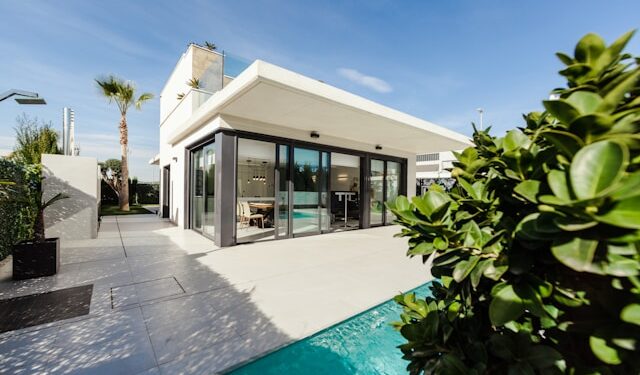Choosing the right paint color for your home’s exterior is a crucial decision that impacts curb appeal, home value, and overall aesthetics. With so many color options available, it can be overwhelming to find the perfect shade. The right choice should complement your home’s architecture, work well with the surroundings, and reflect your personal style. This guide will walk you through the key factors to consider when selecting the best exterior paint color for your home.
Consider Your Home’s Architecture & Style
The architectural style of your home plays a significant role in determining the best paint color. A traditional Colonial or Victorian home often looks great in classic hues like white, navy, or deep green, while a modern house may benefit from sleek, neutral tones such as gray, black, or off-white.
If your home has historical significance, research period-appropriate colors to maintain authenticity. Many paint brands offer collections specifically designed for historic homes, helping you find colors that enhance architectural charm.
Factor in the Surroundings & Neighborhood
Your home’s exterior should harmonize with its surroundings. Look at neighboring homes to ensure your color choice complements rather than clashes with the overall aesthetic. While you don’t have to match exactly, staying within a similar color palette can help maintain neighborhood harmony.
Additionally, consider your landscape and climate. Homes in coastal areas often look stunning in breezy blues and soft neutrals, while earthy tones like taupe, beige, and olive green blend beautifully in wooded or desert environments. If you live in a warm climate, lighter colors can help reflect heat, keeping your home cooler.
Understand Undertones & Lighting Effects
Colors can appear different depending on the time of day and the lighting conditions. A shade that looks perfect in the store may appear too bright or too dull in natural sunlight.
Undertones also play a role in how a color is perceived. For example, gray can have blue, green, or purple undertones, which might become more pronounced depending on the lighting. To ensure the right look, test a few sample colors on different areas of your home and observe how they change throughout the day.
Coordinate with Fixed Elements
Your home’s exterior includes fixed elements such as the roof, stonework, brick, and landscaping. These features should guide your paint selection to create a cohesive and balanced look.
If you have a red brick exterior, warm shades like beige, taupe, or deep green can complement it beautifully. A dark roof may pair well with lighter walls to create contrast, while a gray or brown roof offers versatility with a variety of colors. When choosing an accent color for doors, shutters, or trim, opt for shades that enhance the main body color without overpowering it.
Test Paint Samples Before Committing
One of the most important steps in selecting an exterior paint color is testing samples. Paint a small section of your home’s exterior and observe how it looks in different lighting conditions.
Consider testing multiple shades, as even a slight variation in tone can make a big difference. Keep in mind that paint can appear darker once it dries, so opting for a shade slightly lighter than your initial choice might be a good idea.
Choosing the Right Finish & Quality
The finish of your exterior paint affects its durability and overall appearance. There are three main finish options to consider:
- Matte (flat finish): Hides surface imperfections but may require more maintenance.
- Satin (eggshell finish): A popular choice for exteriors, offering a slight sheen that enhances durability without being too shiny.
- Glossy (high-gloss finish): Best for trim, doors, and accents, as it provides a polished look and is easy to clean.
High-quality exterior paint is a worthwhile investment, as it offers better coverage, fade resistance, and protection against weather damage. Look for paints that include built-in UV protection and mildew resistance for long-lasting results.
Consider Popular & Timeless Color Trends
While trends can provide inspiration, timeless colors ensure longevity. Some of the most popular exterior paint colors include:
- White and off-white: A classic choice that never goes out of style and creates a fresh, clean look.
- Gray and greige: A modern and sophisticated option that complements various home styles.
- Blue hues: From soft sky blue to deep navy, blue adds character and charm.
- Earth tones: Warm beiges, terracotta, and natural greens blend well with outdoor landscapes.
If you want to incorporate trendy colors, use them for accents like doors, shutters, or trim while keeping the main exterior color neutral.
Final Tips for a Successful Paint Job
To achieve a professional and long-lasting finish, keep these tips in mind:
- Hire a professional or do proper prep work: If painting yourself, thoroughly clean surfaces, repair any damage, and apply a high-quality primer.
- Choose weather-appropriate paint: Ensure your selected paint is formulated for your climate conditions to prevent premature fading or peeling.
- Stick to a cohesive color scheme: Use a three-color rule—one for the main body, one for trim, and one for accents—to create a balanced exterior.
Conclusion
Selecting the perfect exterior paint color requires careful consideration of your home’s style, surroundings, lighting, and fixed elements. By testing samples, choosing high-quality paint, and coordinating colors thoughtfully, you can create a stunning and cohesive look that enhances curb appeal and adds value to your property.





